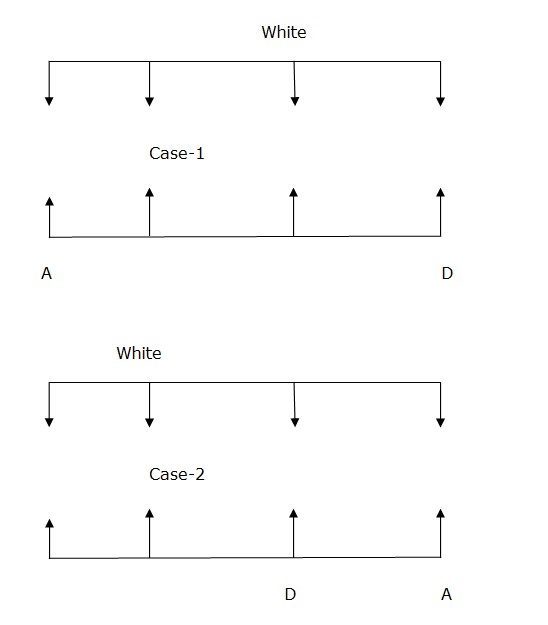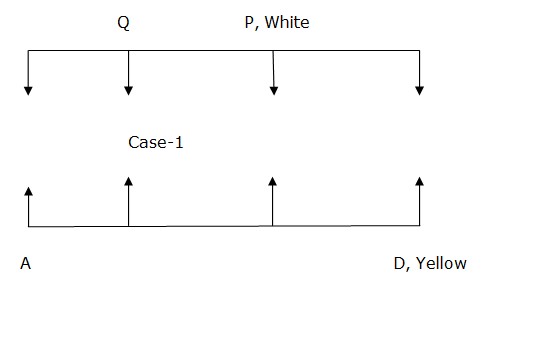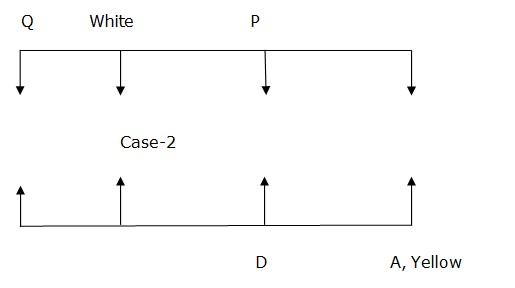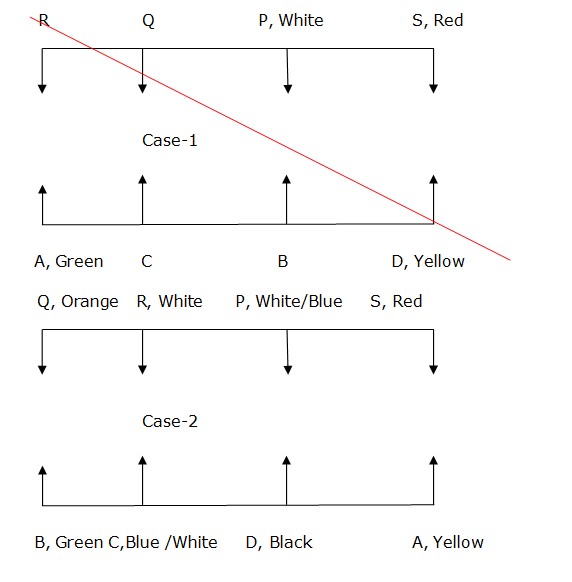Question
Who among the following person sits immediate right of
A? Study the following information carefully and answer the questions given below. Eight persons are sitting in two parallel rows facing towards each other. In row 1 – A, B, C, and D are sitting and facing towards north while in row 2 – P, Q, R, and S are sitting and facing towards south, but not necessarily in the same order. They like different colours – Red, Yellow, Green, Blue, Black, Orange, White and White. Only one person sits between A and the one who faces the one who likes white, who doesn’t sit at the ends of the row. D sits immediate right of the one who faces the one who likes white. Only one person sits between Q and the one who faces D. P is the only neighbour of the one who faces the one who likes yellow, who doesn’t face Q. C sits second to the left of the one who faces the one who likes red, which is not liked by R. The one who likes green sits to the left of C, who doesn’t like orange. D neither likes blue nor white. As many persons sit to the right of B as to the left of the one who likes orange.Solution
We have, Only one person sits between A and the one who faces the one who likes white, who doesn’t sit at the ends of the row. D sits immediate right of the one who faces the one who likes white From this condition, there are two possibilities  Again we have, Only one person sits between Q and the one who faces D. P is the only neighbour of the one who faces the one who likes yellow, who doesn’t face Q.
Again we have, Only one person sits between Q and the one who faces D. P is the only neighbour of the one who faces the one who likes yellow, who doesn’t face Q. 
 Again we have, C sits second to the left of the one who faces the one who likes red, which is not liked by R. The one who likes green sits to the left of C, who doesn’t like orange. D neither likes blue nor white. As many persons sit to the right of B as to the left of the one who likes orange from the above condition, case 1 gets eliminated. Hence, case 2 shows the final arrangement.
Again we have, C sits second to the left of the one who faces the one who likes red, which is not liked by R. The one who likes green sits to the left of C, who doesn’t like orange. D neither likes blue nor white. As many persons sit to the right of B as to the left of the one who likes orange from the above condition, case 1 gets eliminated. Hence, case 2 shows the final arrangement.  So final arrangment-
So final arrangment- 
A boatman rows 216 km upstream in 6 hours and 432 km downstream in 6 hours. How long will it take to row 324 km in still water?
In still water, a boat can cover 30 km in 90 minutes. Speed of the stream is 20% of the speed of the boat in downstream. Find the time taken by the boat...
A boat can cover 176 km in downstream in 11 hours and 150 km in upstream in 15 hours. Find the speed of boat in still water
A boat takes 4 hours to travel 48 km downstream and 6 hours to travel the same distance upstream. What is the speed of the boat in still water?
A boat goes 8 km an hour in still water, but takes twice as much time in going the same distance against the current. The speed of the current (in km/ho...
- Ronit takes a total of 24 hours to travel 128 km downstream and then the same 128 km distance upstream. Additionally, he takes 30 hours to cover 480 km dow...
A boat can cover 140 km in downstream in 7 hours and 130 km in upstream in 13 hours. Find the speed of boat in still water.
Speed of a boat in still water is 4 times more than the speed of stream. If boat covers 126 km in downstream in 7 hours, then find the time taken by the...
The speed of a boat in still water is 30 km/hr. If the boat covers 240 km in upstream in 12 hours, then find the time taken by the boat to travel 140 km...
A boat can travel 15 km upstream and 21 km downstream in 3 hours. Find the speed of the boat in still water if the speed of the stream is 1.5 km/h.
Relevant for Exams:


